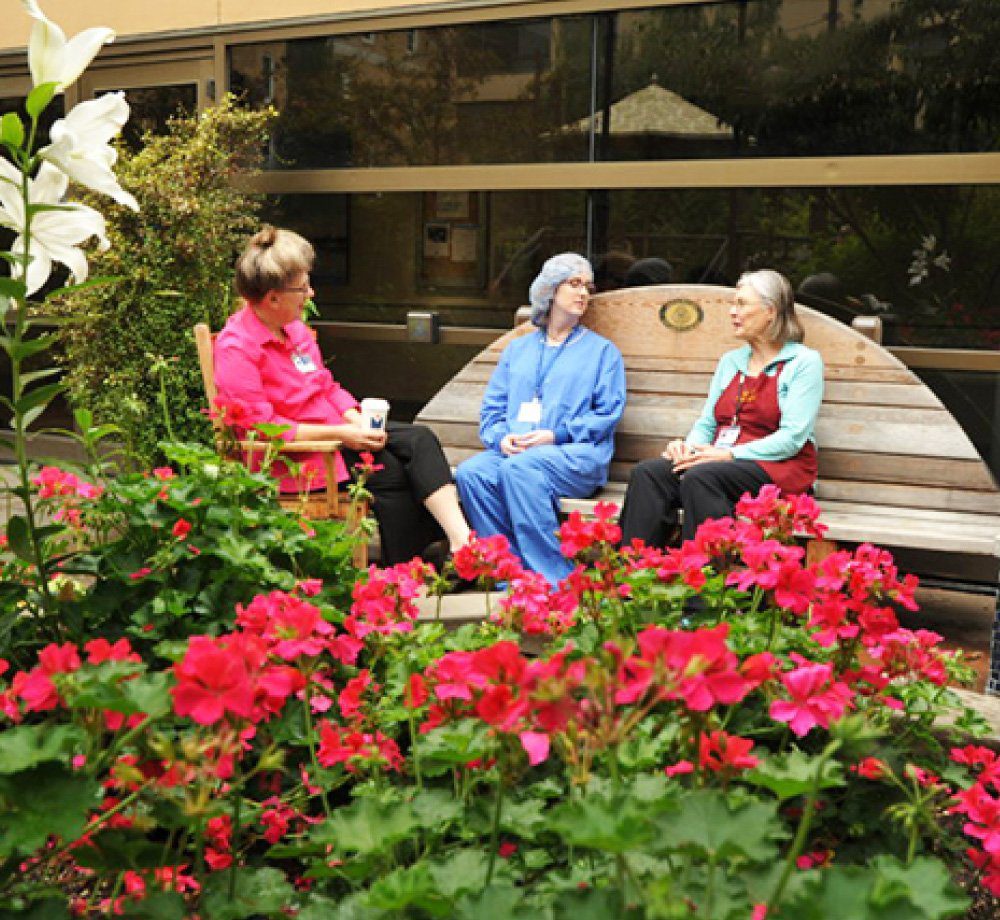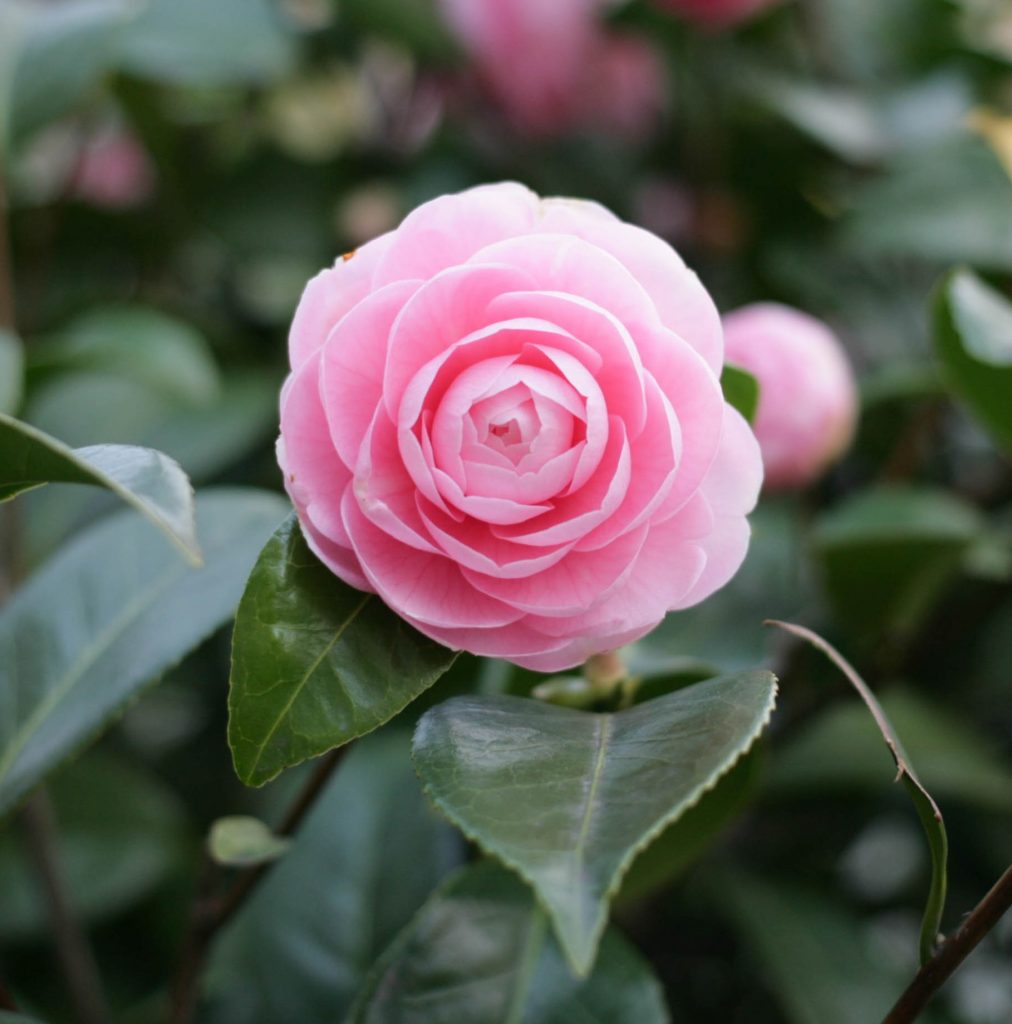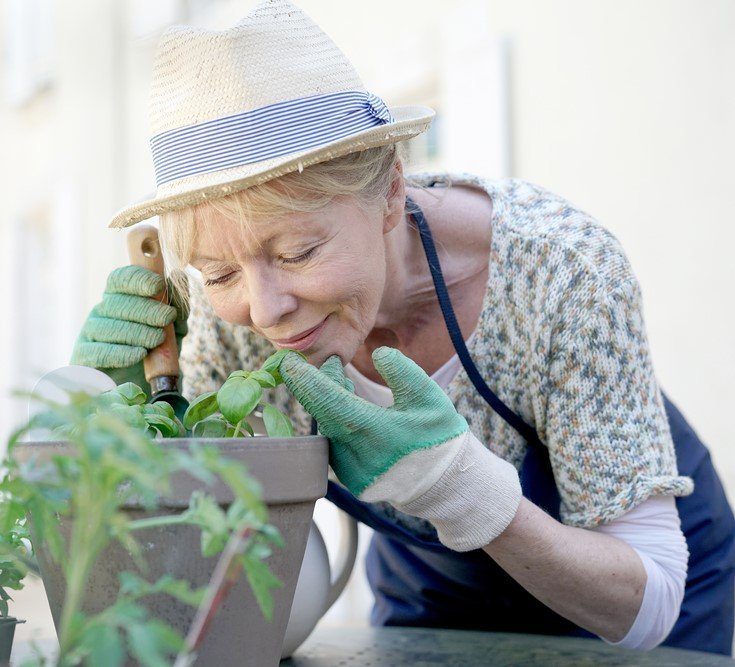Consider Color and Scent When Choosing Flowers For Elderly

Among the challenges of aging is how your eyes can cloud and seeing the vivid joyous colors of flowers can be impacted.
According to the National Eye Institute, by the age of 80 more than half of all Americans will have a cataract or have had cataract surgery.
A cataract is a clouding of the lens in the eye that affects vision.
Therefore, if you want to give your relative a bouquet of flowers, or garden with them, be conscious of the colors you choose. Reds are best, yellow and orange work well. Blue may in fact look gray.
Even the normally sighted might have trouble discerning landscape flowers toward the blue end of the spectrum in hazy August weather. “On a hot summer day,” says Janice Parker, landscape architect in Greenwich, CT., “everything more than 150 feet away goes gray, except for reds and yellows. So, if you want a vibrant garden you have to use those colors.”

Teresia Hazen, who is the horticultural therapist at Legacy Health’s Emanuel Medical Center in Portland, Oregon, which has a vigorous gardening program for its network of hospitals, is an avid gardener. “Each day I survey my kingdom of primroses, Lady Banks rose, winter blooming camellias, green peas, English roses and more. I garden in every season,” she says.
She urges anyone helping an older relative leaving the hospital to set up a home garden if they have the space. It needn’t be more than ten-by-ten feet, she says, and it should be colorful and enjoyable for all four seasons. Someone could start within that space with a bench, well-drained gravel, a bush for the birds and a little patch of wild flowers from seed. Maybe some basil. And a bird feeder.
Working in a garden is therapeutic, psychologically and mentally refreshing. From a small start, she says, people can, to the best of their ability, perhaps recover some abilities to bend, reach, stoop, stretch, lift, push, pull, sit, stand and walk. Just helping pot some herbs on a small table is stimulating and helps hand-eye coordination. And it smells great.

These are all the kind of things Hazen and her team practice in their many gardens, open to patients, hospital staff and visitors, and the public, 24 hours a day. Doctors, in fact, sometimes write an order to send even bed-ridden patients out into the garden.
Be sure a garden stimulates not just sight but touch, hearing (by attracting birds and even squirrels), smell and good things to eat, she says. Nothing wrong with a bright red tomato in a planter.

Then make a comfortable place where you can sit with your friend or relative and talk about what you see. Have pillows and throws handy if it gets chilly. Prepare a picnic. Bring lemonade or hot chocolate. Or a pot of coffee and some donuts. Invite the neighbors. Pick a leaf, ask about what you see.
After that start it is all too easy to start adding to a garden. Emphasize plants with flowers or foliage in saturated colors like red, yellow, or orange, since colors in the blue/lavender range tend to be perceived as gray when older people develop cataracts.
In fact, I just gave my own mother a bouquet of orange tulips.
Include a range of scented plants that can be enjoyed throughout the year. Geranium varietals have wonderful scented leaves.
Smell is one of the last senses to fade, and smelling certain plants, or pinching their leaves, can evoke powerful memories. Some plants have fragrances in the evening and should be planted near windows or entryways.
And even if the lilacs look gray, they will smell wonderful.
Meanwhile, bring on the bouquets. Go for the tangerine dahlias, the red roses, the yellow sunflowers. The blue forget-me-nots won’t be forgotten but could be less appreciated. – Jill Brooke & Linda Lee
For more information about creating healing hospital gardens, an excellent source is the Center for Health Design
